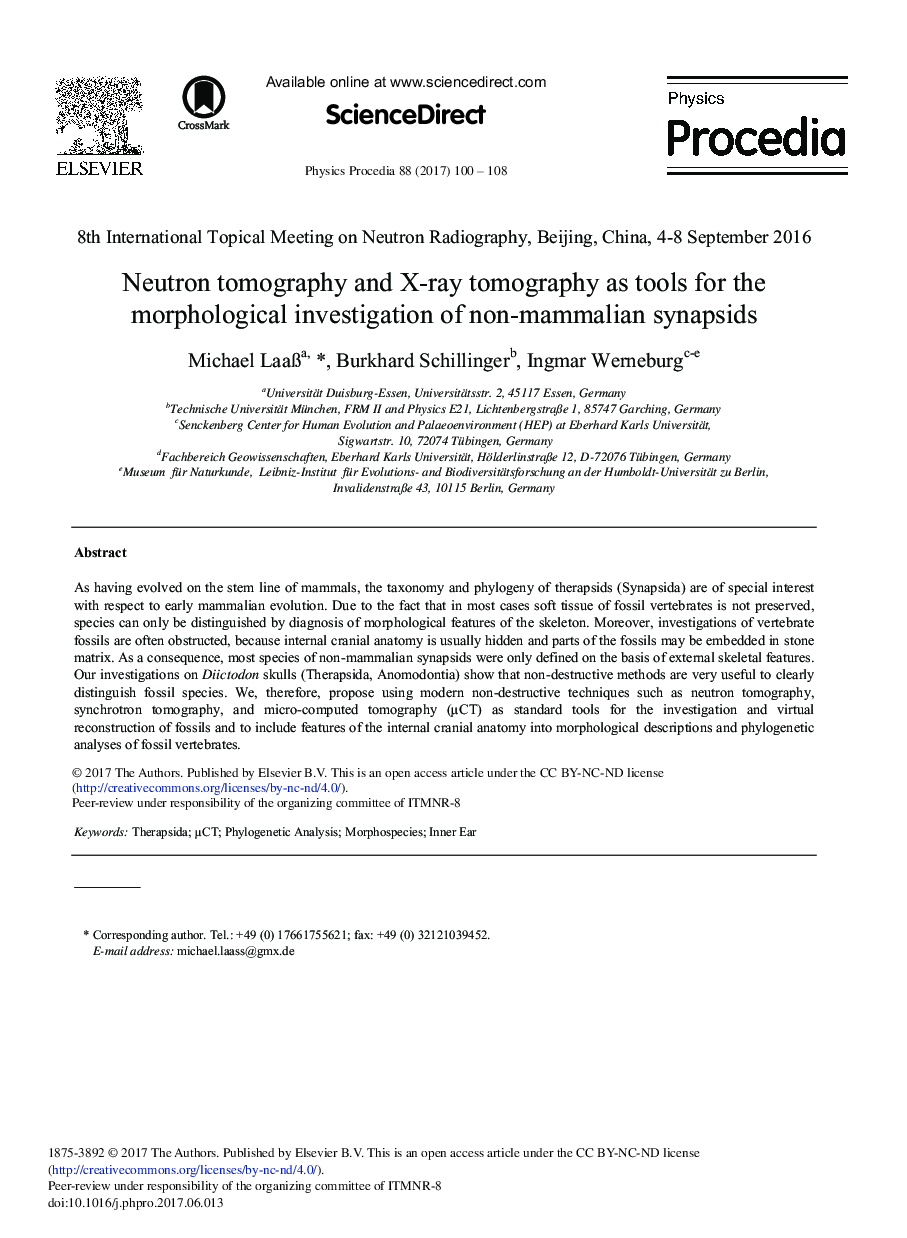| Article ID | Journal | Published Year | Pages | File Type |
|---|---|---|---|---|
| 5497193 | Physics Procedia | 2017 | 9 Pages |
Abstract
As having evolved on the stem line of mammals, the taxonomy and phylogeny of therapsids (Synapsida) are of special interest with respect to early mammalian evolution. Due to the fact that in most cases soft tissue of fossil vertebrates is not preserved, species can only be distinguished by diagnosis of morphological features of the skeleton. Moreover, investigations of vertebrate fossils are often obstructed, because internal cranial anatomy is usually hidden and parts of the fossils may be embedded in stone matrix. As a consequence, most species of non-mammalian synapsids were only defined on the basis of external skeletal features. Our investigations on Diictodon skulls (Therapsida, Anomodontia) show that non-destructive methods are very useful to clearly distinguish fossil species. We, therefore, propose using modern non-destructive techniques such as neutron tomography, synchrotron tomography, and micro-computed tomography (μCT) as standard tools for the investigation and virtual reconstruction of fossils and to include features of the internal cranial anatomy into morphological descriptions and phylogenetic analyses of fossil vertebrates.
Related Topics
Physical Sciences and Engineering
Physics and Astronomy
Physics and Astronomy (General)
Authors
Michael LaaÃ, Burkhard Schillinger, Ingmar Werneburg,
